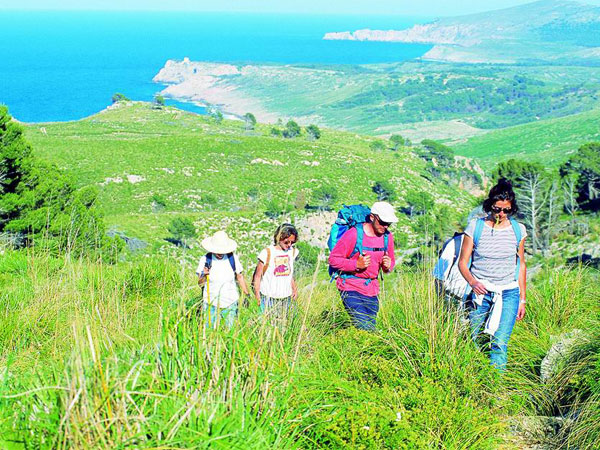Mallorca’s Landscapes

This is the largest of the four Balearic Islands, measuring 96 km at its widest point and 78 km long. In total its covers and area of 3,640 km2 and 554 km of coastline. The island´s location, in the middle of the western Mediterranean, has played a pivotal role in its historical and economic development. The island’s mild climate has forced Mallorcans to adopt a system of agriculture typical of dry areas, making optimum use of the island´s limited rainwater. However, this wonderful climate has also made the development of tourism possible which has become the main source of direct and indirect income for the island´s inhabitants.
Mallorca´s landscape is very varied from the Tramuntana Mountain range, formed by a line of mountains running parallel to the north coast, the highest of which is Puig Major (1,445 m). In contrast the mountains give way to the rocky coastline , down to hidden little pebble beaches and coves. In the valleys streams run through from the mountains producing fertile soil where the island’s famous orange and lemon trees grow, particularly in areas such as Soller or along hillside terraces with narrow orchards producing the best tomatoes, beans or sweet grapes on the island in areas such as Estallencs, Banyalbufar, Deià and Valldemossa.
In the centre of the island is an area known as Es Raiguer, next to the Tramuntana Mountains, which is characterised by its abundance of water and lack of flat land which makes farming difficult. By contrast, the plain or Plà has large areas of flat land where the majority of the island´s agricultural produce such as, potatoes, sweetcorn, rice and other vegetables, is grown.
From northwest to southwest the land gradually leads down to the sea forming bays, long stretches of beach and small coves of fine sand and clear water with reflections of the pines and fig trees which have been planted right down to the shore. Mallorca features many small islands around its shores; in the south is Cabrera, now a Maritime and Terrestrial National Park, and to the west is Sa Dragonera, also declared a Natural Park by the Consell de Mallorca.
In the southwest, the large and deep Palma Bay is in constant motion with daily cargo ships , ferries and cruise ships. Furthermore, this vast expanse of water also protects and shelters the former kingdom´s capital, which today is the political and financial centre of the Autonomous Government of the Balearic Islands.
 English
English  Español
Español  Deutsch
Deutsch 
